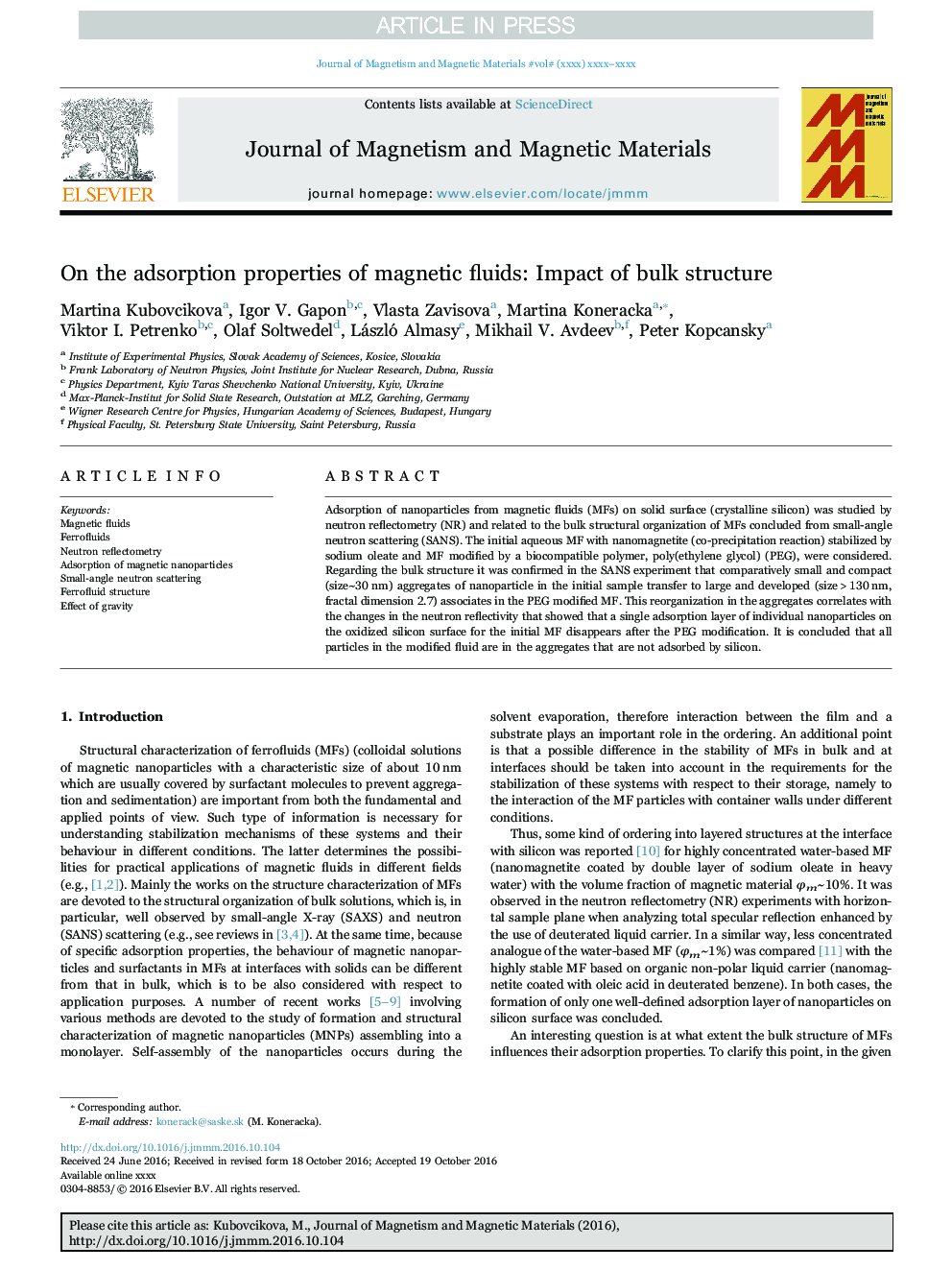| Article ID | Journal | Published Year | Pages | File Type |
|---|---|---|---|---|
| 5491157 | Journal of Magnetism and Magnetic Materials | 2017 | 4 Pages |
Abstract
Adsorption of nanoparticles from magnetic fluids (MFs) on solid surface (crystalline silicon) was studied by neutron reflectometry (NR) and related to the bulk structural organization of MFs concluded from small-angle neutron scattering (SANS). The initial aqueous MF with nanomagnetite (co-precipitation reaction) stabilized by sodium oleate and MF modified by a biocompatible polymer, poly(ethylene glycol) (PEG), were considered. Regarding the bulk structure it was confirmed in the SANS experiment that comparatively small and compact (size~30Â nm) aggregates of nanoparticle in the initial sample transfer to large and developed (size>130Â nm, fractal dimension 2.7) associates in the PEG modified MF. This reorganization in the aggregates correlates with the changes in the neutron reflectivity that showed that a single adsorption layer of individual nanoparticles on the oxidized silicon surface for the initial MF disappears after the PEG modification. It is concluded that all particles in the modified fluid are in the aggregates that are not adsorbed by silicon.
Related Topics
Physical Sciences and Engineering
Physics and Astronomy
Condensed Matter Physics
Authors
Martina Kubovcikova, Igor V. Gapon, Vlasta Zavisova, Martina Koneracka, Viktor I. Petrenko, Ðlaf Soltwedel, László Almasy, Mikhail V. Avdeev, Peter Kopcansky,
